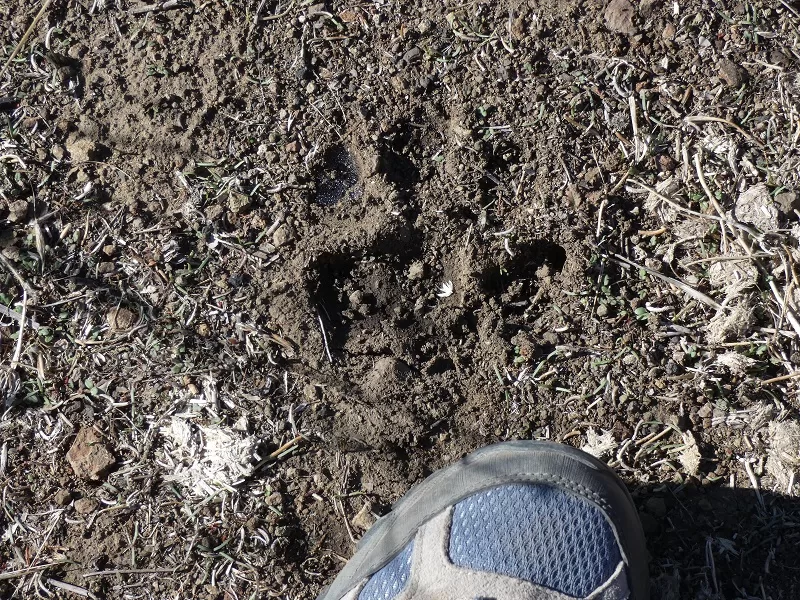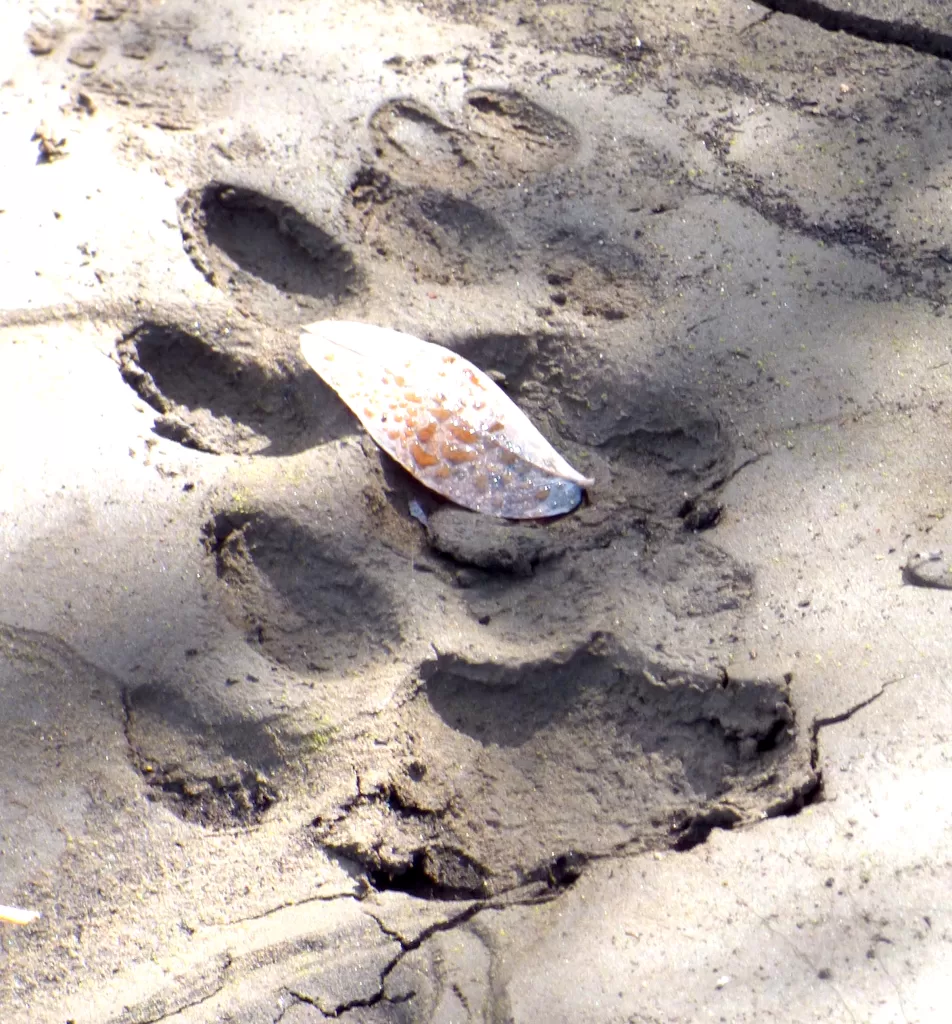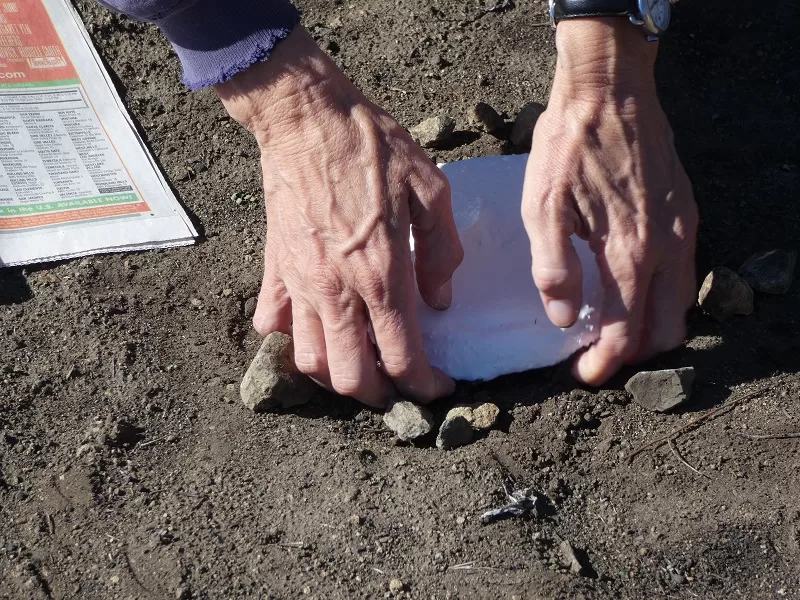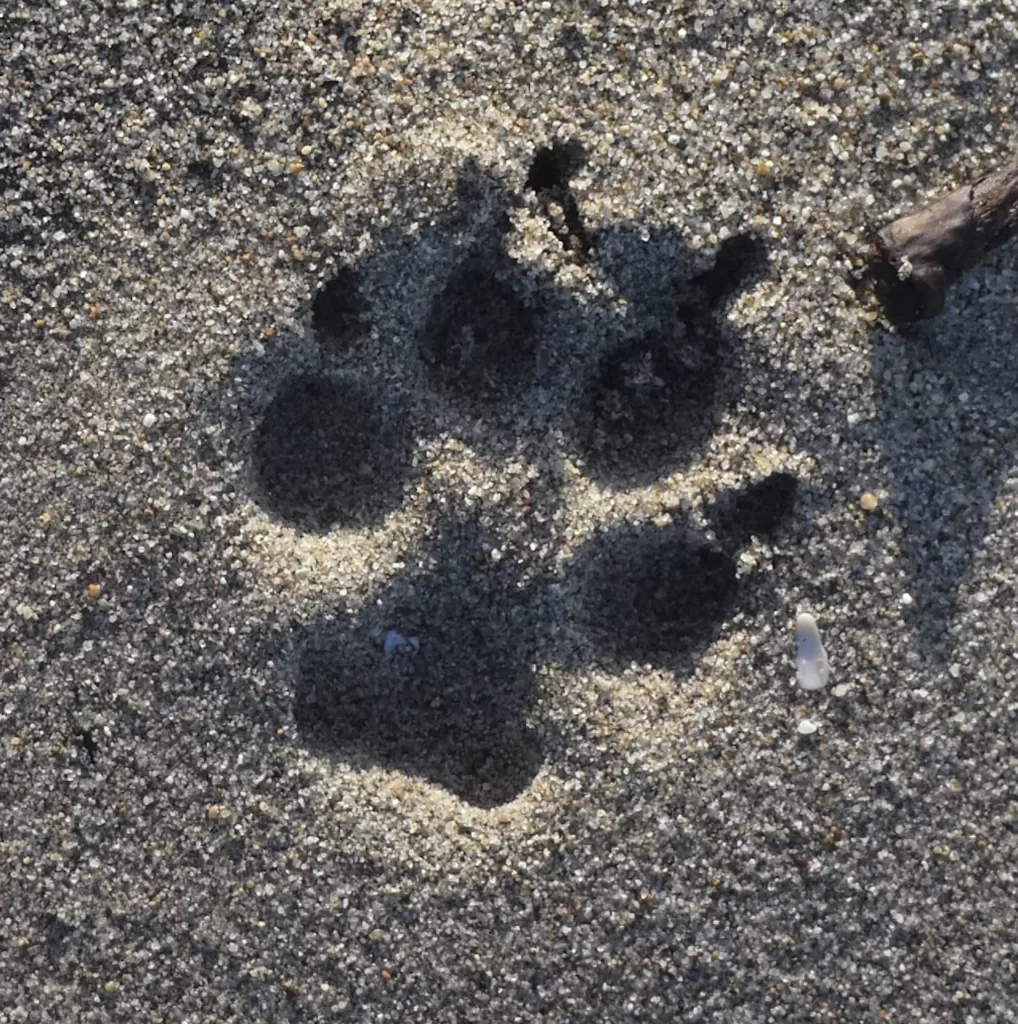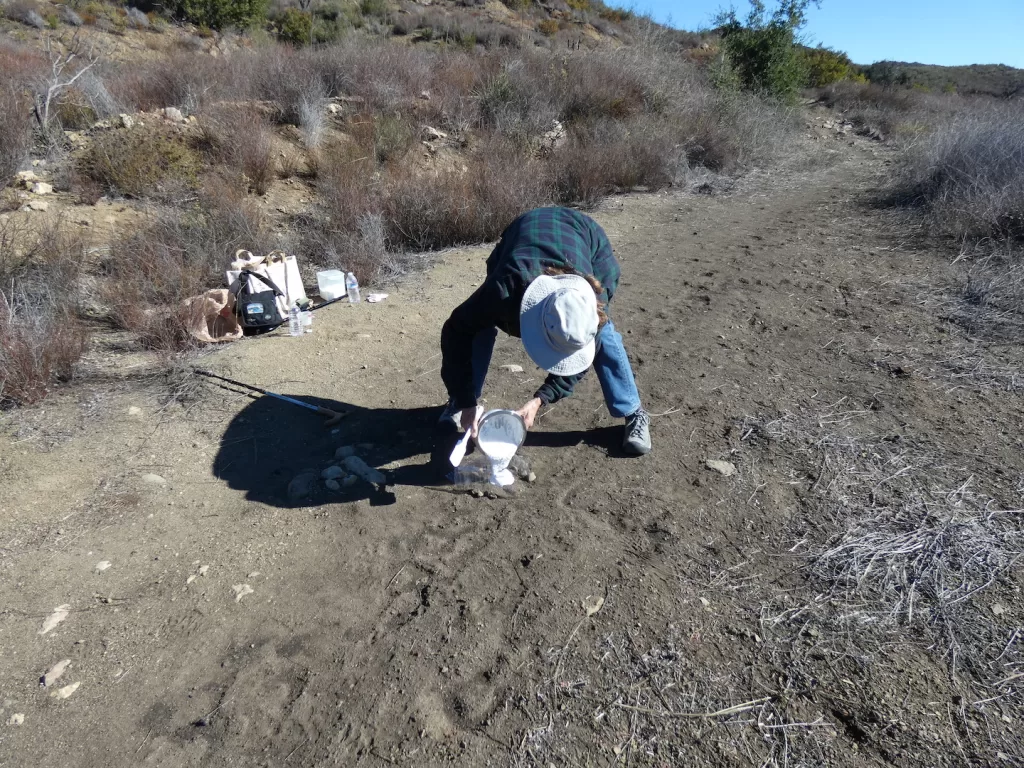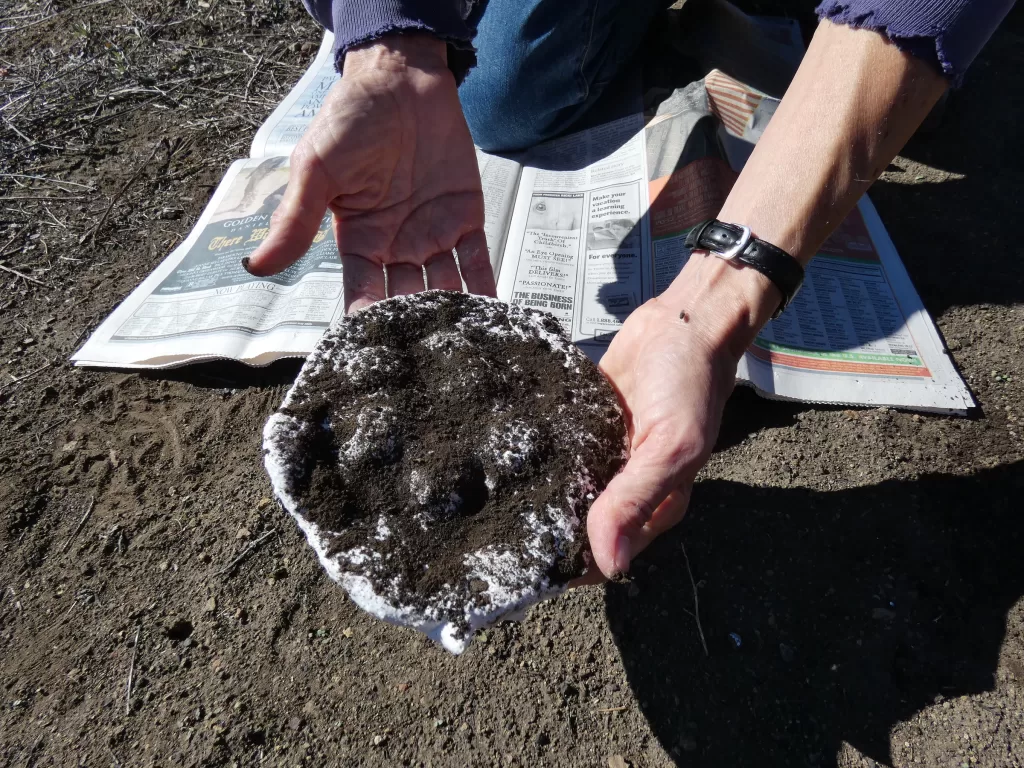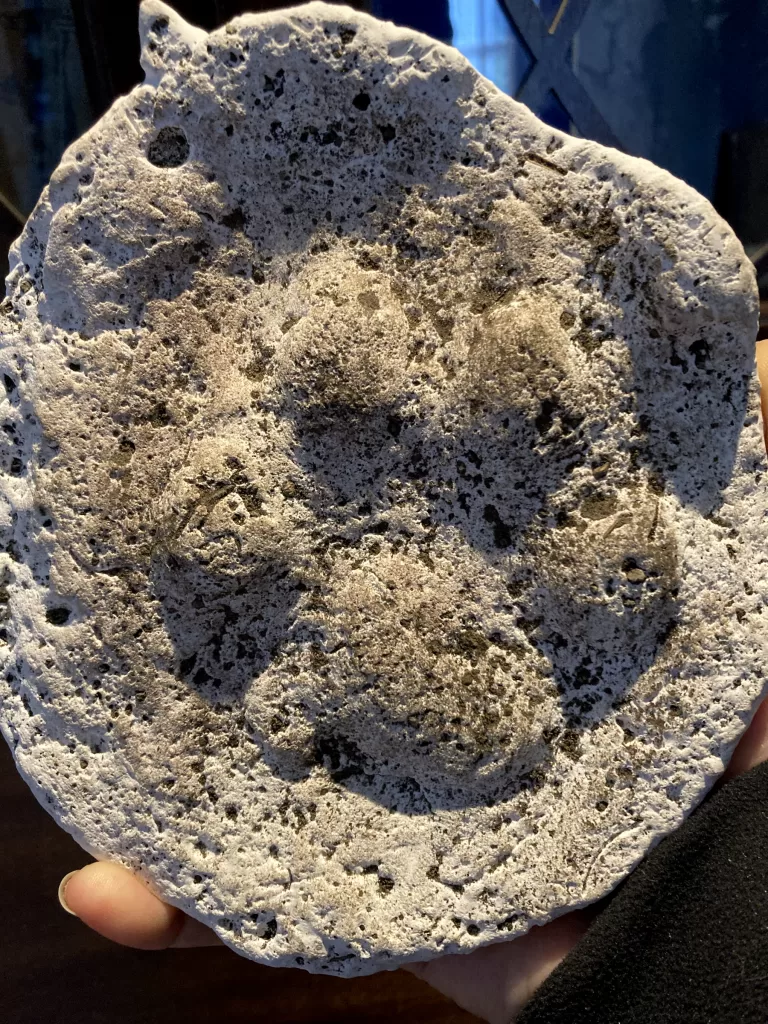On the Trail of a Mountain Lion
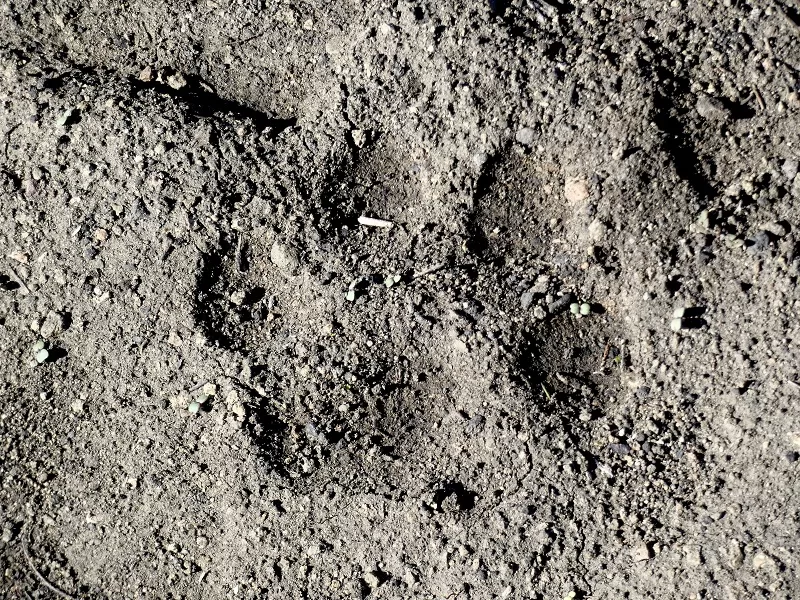
The footprint was in the middle of the trail. It was shallow, but perfect, and the early morning light threw each large pad into sharp relief, making it stand out from the other tracks: human, horse, coyote, dog, and deer. We found a second print nearby, less clear, but deeper—the back foot, perhaps, slipping a little in the mud from the previous night’s rain.
The silent, cautious, solitary mountain lion has earned the nickname “ghost cat” for its ability to pass unseen among its human neighbors. For an animal that can grow to be more than five feet long and weigh 200-plus pounds, it is remarkably good at not being seen. Although mountain lions live among us in the Santa Monica Mountains, most of us will never see one, unless it happens to slip past a motion-sensing camera. One trace they do leave behind is footprints, especially in wet weather.
I was almost certain these were the paw prints of a mountain lion, one that had traveled this trail hours before we did. Finding that print among the others on the trail caused an almost electric thrill—but I had to be sure. It was big enough—about the size of the palm of my hand—and the toe prints looked right, but I needed another opinion.
I sent photos to my friend and colleague, Ann Dittmer who, in addition to being an emeritus lecturer at California State University in the geography department, is an avid and knowledgeable naturalist. She arranged to meet me at the site the following day. Ann has experience making plaster casts of tracks, and came prepared with a kit that included plaster of Paris, a large bowl and a spatula, but it was up to me to find the footprints again. One wrong step from a horse or a hiker—or from my own feet while I searched—and the evidence would be erased.
It wasn’t. The deeper print was easy to find, although a spider had spun a web over one toe. The fainter print was harder to find, but at last, there it was, drier, fainter but still entirely intact.
Taking a cast requires skill and patience—it takes the plaster at least a half hour to set, depending on soil moisture and weather conditions.
“Once the decision is made to finally uproot the cast after a long, impatient wait, the moment is filled with anxious anticipation,” Ann explains. “Did I make the cast thick enough? What if I break it? Did the plaster fill the track completely? Was the print too shallow? And then there’s that ‘Ooooo!’ moment when you turn the cast over to see white raised pads above dark dirt and you know you have something really cool.”
It was definitely an “Ooooo!” moment. Even with mud and soil still adhering to the molds, the paw prints were so clear there was no doubt in my mind that this was a big cat.
Once the casts were dry enough to move, Ann wrapped them in newspaper to protect them. Each one had to dry completely before it could be cleaned. Once the mud and dirt are carefully washed away details emerged that weren’t visible on the ground: the distinctively three-lobed shape of the center pad; the imprint of thick, soft fur between the pads; the faint imprint of a claw—just one—on the top outside toe of the front foot (big cats, like small ones, have retractable claws and don’t usually leave claw marks, but that one toe is an exception). It was now also possible to get accurate measurements. The front foot was 3.5 inches wide, and 3.25 inches long. That’s a big foot, but about average for a female mountain lion, or a young male. An adult male can have a
Ann used the evidence to establish that this was almost certainly a mountain lion and not a great dane, or other large canine.
“There’s something of a latent investigator in me that loves a good hunt through my numerous ID books and online searches,” Ann told me, after an exhaustive look at the evidence. “The obsession to identify every new bit of nature that crosses my path extends to everything: butterflies, birds, and beetles to reptiles, rodents, and rocks. Track identification is part of nature’s mysteries meant to challenge our brains—and what could be more fun than that?”
For me, it was the thrill when I first saw that footprint on the trail and knew that perhaps just a few hour earlier, a mountain lion—the ghost cat of the Santa Monica Mountains—passed this way—imperiled, endangered, and at risk from so many man made hazards, but still walking free—right here among us.
Collecting a physical sample of almost anything in the Santa Monica Mountains National Recreation Area isn’t permitted in public open space without a permit, but taking a plaster cast is like taking a photo. It doesn’t harm anything or remove anything from the park. However, we were careful to clean up every speck of plaster, and leave no trace.
